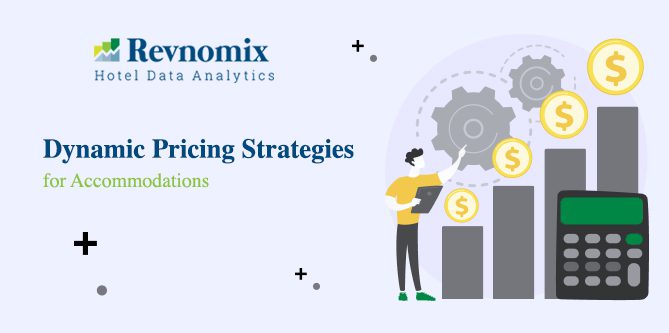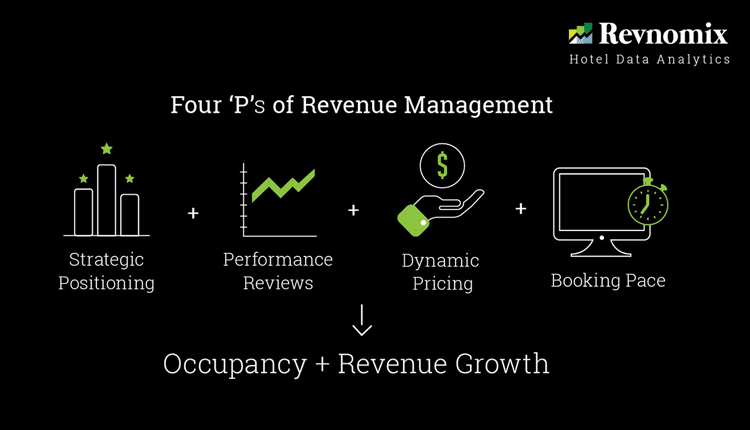The hotel sector is always changing, and in order to maximize their profits, hotels are increasingly using dynamic pricing.
Hotels can boost their revenue potential by offering the right price at the right time through the use of dynamic pricing. This can be achieved by creating various rates for certain periods of the year or even days of the week. Hotel owners may make sure they are always giving the best deal for their rooms by using dynamic pricing.
Revenue in the hotels market will reach US$7.66 Billion in 2023. Revenue will show an annual growth rate (CAGR 2023-2027) of 8.28%, resulting in a projected market volume of US$10.53bn by 2027.
In the hotels market, the number of users is expected to amount to 61.33 million users by 2027. User penetration is projected to be 3.2% in 2023 and 4.2% by 2027. The average revenue per user (ARPU) is expected to amount to US$166.50.
In the hotel sector, dynamic pricing strategies are crucial for both surviving and prospering in the face of fierce competition.
Because it is vital that you update your hotel room pricing plan in light of the dynamic real-time market conditions. And you can accomplish that by knowing how to implement dynamic pricing strategies in your hotel.
Call the Best Revenue Management Company in India
What is a Dynamic Pricing Strategy?
Let’s start by defining dynamic pricing: it is a strategic rate that adjusts in response to changes in the market’s actual demand.
A hotel can apply dynamic pricing strategies to raise rates when demand is strong. In contrast, rates will decrease as demand slows down in an attempt to maintain and raise higher occupancy rate.
When a specific check-in date draws near, it adapts well to the shift in demand and adjusts the rate based on available space and remaining inventory.
Let’s examine how adopting a dynamic pricing strategy in hotels could help enhance hotel revenue.
Why Dynamic Pricing is Important? How Do Hotels Use Dynamic Pricing?
When hotels use dynamic pricing, they are always modifying their room rates as per mathematical formulas designed to boost occupancy in response to local demand.
[Suggested Read: Techniques and Strategies for Better Hotel Pricing]
In order to optimize occupancy while retaining ADR and RevPAR, hotel owners need to have a thorough understanding of their clients and how they behave. You can target dynamic pricing algorithms to focus on:
1. Demand for occupancy.
2. Patterns of guest booking.
3. Several market segments.
4. Patterns of the day of the week.
5. The average length of stay (ALOS) for visitors.
6. Preferred room types.
Hotel owners can forecast market changes and create a rate strategy to boost ADR, RevPAR, and occupancy by conducting thorough market research. Price optimization’s success or failure relies on how the strategy is applied at a specific property.
In addition to offering discounted prices on OTA bookings, hotels may also decide to impose limits on the number of rate changes that can take place in a given time frame. Or adjust rates in response to changes in hotel occupancy.
Depending on the revenue targets of a given property, dynamic pricing can be adjusted and targeted in a variety of ways. Looking for an example of dynamic pricing strategy? Click below.
Check Major Brands Using Dynamic Pricing Strategies
Top Benefits of Implementing Dynamic Pricing Strategies
There are several ways in which hotel owners might benefit from dynamic pricing strategies. The following are the benefits of dynamic pricing in hotel industry.
1. Improves Room Sales
Even when local demand declines, you may still sell rooms with ease if you use dynamic pricing strategies. You can maintain the flexibility of having bookings for your rooms by using a variable fee to draw in and entice guests.
2. Raises the Hotel Occupancy
A hotel can achieve an even greater hotel occupancy rate by implementing dynamic pricing strategies. Your occupancy rate is determined by the price you charge per hotel room in an attempt to sell as many rooms as possible. As a result, a reasonable price must be set in line with market and demand factors.
Optimize Your Hotel’s Pricing Strategies to Boost Profits
3. Optimizes Revenue
Increasing your profit is another benefit of using dynamic pricing strategies in hotels. Making sure a room is utilised to its full potential results in more revenue than is feasible in a given situation.
4. Creates Loyal Customers
It offers a happy medium between charging fairly to keep clients from going to the competition and charging enough to allow you to turn a profit. When you charge a reasonable price that customers are willing to pay, it helps you maintain consumer loyalty.
How to Implement Dynamic Pricing Strategies in your Hotels?
This is how to put dynamic pricing in hospitality industry into practise, step-by-step.
1. Know your Basics
You have to know the basics of dynamic pricing before you can put it into practise. Using this strategy, you can adjust your rates as per both internal and external variables. It implies that you should be ready to adjust prices often, several times per day in response to different causes.
2. Examine Your Market
Pay close attention to your market and learn about the strategies used by your rivals. To compare your rates with those of your competitors, use comp set data. Examine their pricing strategies under different market scenarios.
3. Use a Good RMS
A strong Revenue Management System (RMS) is vital for the effective execution of dynamic pricing strategies. This software forecast demand using artificial intelligence (AI) and dynamic pricing algorithms.
Request a Demo for the Best Hotel Pricing Strategist Software
They then recommend the best prices depending on a range of variables, such as rival rates, local events, seasonality, booking pace, and more. Because RMS can handle vast amounts of data much faster and more correctly than humans, it is a vital tool for dynamic pricing.
4. Know your Guests
Divide up your customer base into groups as per the booking channels, lead times, duration of stay, etc. Examine their booking habits and pricing sensitivity. Finding the correct price at the right moment requires knowing your customers and their buying habits.
5. Create Pricing Rules
Set rules for pricing based on various situations. These could be rules for pricing changes made when demand hits a certain point, restrictions on booking made during times of high demand (such as minimum stay requirements), or last-minute sales to fill unsold rooms.
6. Evaluate & Modify
Dynamic pricing is not a “set it and forget it” approach. It needs to be monitored and adjusted constantly to get the best results.
Assess your pricing strategy on a regular basis, make changes based on its performance, and experiment with various strategies to determine which ones work best.
To make sure you’re not overcharging or undercharging for your rooms, keep a watch on the market and your rivals.
7. Train your Employees
Your employees should be aware of your dynamic pricing strategies, notably those working in sales and front desk positions.
They should be prepared to address any questions or issues that arise and to explain changes in rates to visitors. Giving training will guarantee that everyone knows your dynamic pricing strategy and can help make it successful.
8. Be Honest about your Price Changes
If handled incorrectly, price changes may cause confusion or unrest among customers. Make sure your customers can always see through your pricing. Steer clear of unstated fees and always express what is included in the cost.
[Suggested Read: 4 Ps of Revenue Management – Pricing]
How Can Revseed by Revnomix Help you with Dynamic Pricing Strategies?
As already stated, keeping an eye on competitors’ hotel prices is crucial for determining dynamic pricing.
To help you with real-time hotel price monitoring, we have outlined how to use Revseed, the best revenue management software. So, let’s take a look. Revseed quickly searches over hundreds of OTA platforms and gives you precise, recent data on hotel prices from different OTAs.
With the help of Revseed, you may learn more about the pricing strategies of your competitors and the current market price trends. Knowing what customers are ready to pay will help you better tailor your dynamic pricing strategies to draw in more customers and grow your hotel.
This revenue management system saves you money and time by effectively and efficiently gathering important price-related data. Overall, this software is easy to use and provides reliable, high-quality data, which makes it a vital resource for hotels trying to work on their dynamic pricing strategies.
Besides Market Linked Strategy (pricing suggestions based on hotel’s & competitor’s pricing), Revseed also provides volume, rate and availability strategy.
So, why wait? Get in touch with Revnomix Solutions today for data analytics and the best hotel revenue management services or systems.







